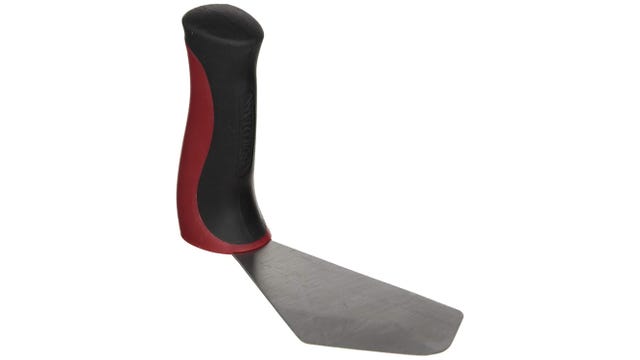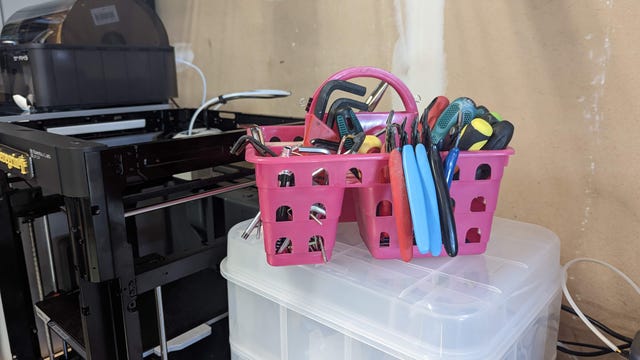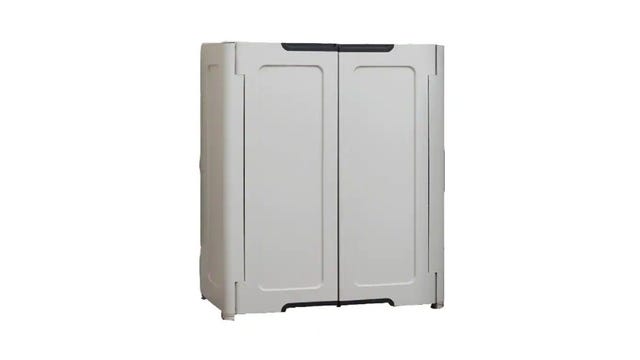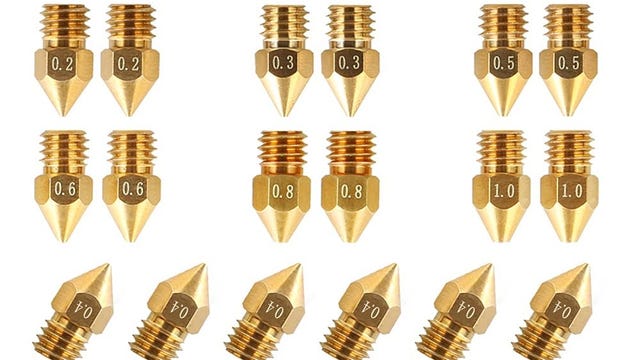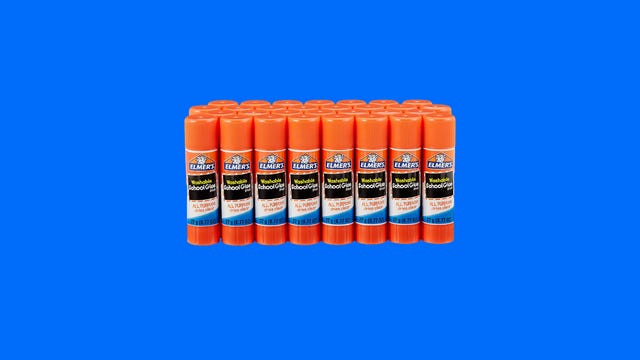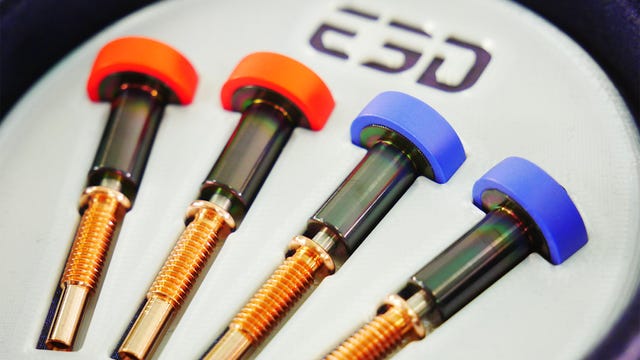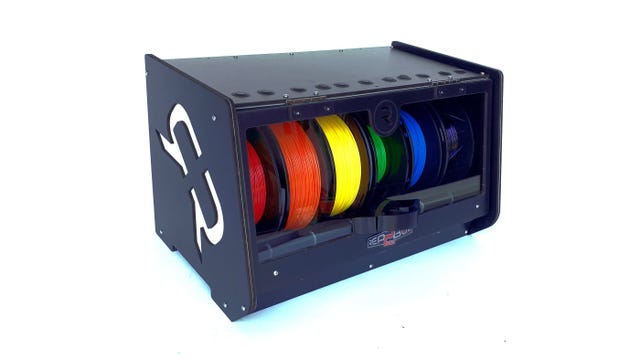Technologies
Best 3D-Printing Accessories: Make the Most of Your 3D Printer
From tiny 3D-printer scrapers to giant machines, we have everything you need to level up your 3D-printing experience.
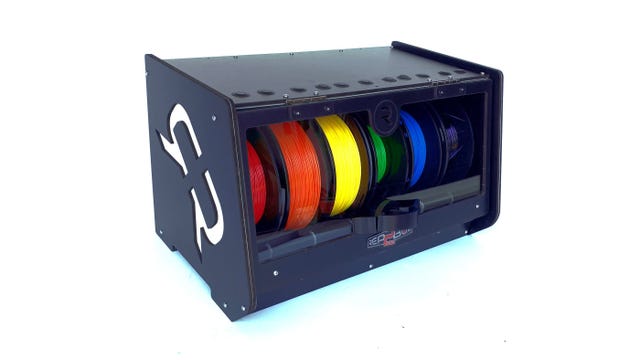
With some hobbies, extra tools and accessories can make them even more fun. 3D-printing is one, and the addition of a good set of extras will make your 3D-printing time much easier. Often these accessories are simple — a set of snips for cutting filament or a bit of glue to help bed adhesion — but there are also new pieces of hardware that can significantly improve your print quality or give your 3D printer powers it never had before. More than that, though, good accessories can make even the best 3D printers run above and beyond their normal scope.
I’ve amassed a huge number of helpful accessories after nearly a decade of 3D printing and have researched many others. Amazon is a great resource for finding basic 3D-printing accessories, and California-based MatterHackers has everything you need for more advanced upgrades and gear.
Best accessories for beginners
While every 3D printer comes with a paint scraper that you can use to remove models from the build plate, not all are created equal. Most 3D printer scrapers don’t allow you to get the blade low enough to lift a model without damaging the build surface. I use the Buildtak 3D printer scraper because it can swipe under the model without gouging down, making them pop right back up.
These little storage caddies are incredibly helpful for more than just storing shower products. The separate compartments make it easy to store all of your hex key wrenches, scrapers and filament cutters in a way that makes it easy to move them around your workspace with the handy handle. I have three of these in my workshop and I use them for 3D-printing tools, assorted glues and sandpaper. It makes life a lot easier.
A digital caliper is a helpful 3D-printing accessory, especially if you’re creating your own models. Most can measure details down to a thousandth of a millimeter, which lets you design with a high degree of accuracy.
Having a set of calipers also helps you measure your prints to make sure they’re printing in the correct size and shape.
Having a central place to store your materials is important to keep them safe and dry. These cabinets from Home Depot are expandable and easy to build. They’re perfect for stacking your filament or resins safely, and if you add a small dehumidifier or desiccant packets, you can keep everything dry, too.
Most 3D printers come to you with a 0.4mm nozzle, which is fine for most uses. There are a lot of cool projects you can make with larger nozzles, though: Try making thick vases using a 0.8mm nozzle or detailed miniatures with a 0.2mm nozzle. Having a variety of nozzles will expand your horizons to no end.
These Mk8 nozzles are designed for the Creality Ender 3, but many printer companies either use the same Mk8 nozzles or variety packs of their own.
Magigoo is like a glue stick on steroids. It is specifically designed to hold 3D prints to the build plate while printing but comes loose easily when the bed is finally cooled. It’s incredibly satisfying to print models that are barely touching the build surface that act like they are held down with cement. A small bottle goes a long way too, so it’s worth the price.
Did you know that the 3D-printing community uses so much Aqua Net hairspray that Amazon’s «Frequently bought together» section shows filament and replacement printer beds? Aqua Net is used as a transition adhesive that both helps your filament stick to the build plate, and when it gets cold, makes it easier to remove. You have to be careful not to spray it onto any moving parts, but if you take off your removable build plate and spray it gently and evenly you will see better results immediately.
Models often have sharp edges when they first come off of the build plate, especially if you’ve used a brim to anchor them down. A deburring tool like this smoothes those edges with a simple swipe across the corner. It takes a little getting used to, but if you’re making something for people to handle, a deburring tool is a must.
If you live here in the US, you may well have a set of hex wrenches that you use for most things. However, 3D printers are made using metric measurements, and not inches, so they will either be loose and damage the nut or not fit at all. A good set of metric hex wrenches are affordable and make 3D printing easier.
Desiccant is a much needed tool in the fight against moisture. Even the best 3D-printing filament can be degraded by absorbing too much moisture, and if you live in a damp climate, storing your filament in a cool dry place with a desiccant pouch is a great way to keep it usable for longer. These pouches are a little pricier than some, but they can be recharged by heating them up so you can use them again and again.
Like the hairspray, glue sticks help hold a print down, while also adding a barrier between the print and the plate. Some materials stick a little too well to a build plate and can tear a mat or even crack a glass plate. Glue sticks are water soluble too, so it’s easy to wash off with soap and water.
Accessories for intermediate and advanced users
If you’re hoping to print a filament like ABS, you’ll need your 3D printer to be very hot with no breezes. If you live in a particularly cold climate an enclosure is a helpful way to warm up the area around your 3D printer without having to pay a fortune on heating bills. The Wham Bam HotBox has two sizes, so even if you have a bigger machine you can reap the benefits of a warmer build area.
One of the best upgrades to be released in recent years is the Revo rapid change system from E3D. Available for a huge number of 3D printers, this hotend replacement adds the ability to quickly swap out your nozzles without the use of wrenches and pliers. You can remove the filament, let the nozzle cool down and twist it off with your fingers.
Being able to easily swap nozzles opens up new printing techniques with larger nozzles for strength and smaller ones for detail. It is a must-do upgrade for any compatible machine.
Nozzles are consumable in 3D printing and you can expect to use them up fairly frequently. If you print materials with abrasive materials such as carbon fiber, wood or even glow in the dark, your nozzle could be destroyed in just one eight-hour session. The ObXidian nozzle is specially hardened to reduce wear and tear and keep your nozzle printing for much longer.
It’s also a part of the Revo system I just mentioned, so can be easily swapped out for different sizes or other nozzles easily.
The Palette 3 is a multimaterial unit that lets your standard 3D printer print multiple colors or types of filament. It opens up a huge amount of variety in your 3D printing and can help you create a truly unique model. You can even take an existing digital model and «paint» colors onto it so that when it prints, it is a multitude of — well up to eight — colors.
The RepBox is a community favorite for a number of reasons. The creator is an awesome advocate for 3D printing and the box itself is a fantastic design that can be mounted or sat on a workbench. The RepBox holds six 1kg rolls of filament and comes with several dehydrating cases to keep them fresh. The filament is fed out of the box directly into a Palette system or multiple printers without ever touching the moist air.
3D printer accessories FAQ
What’s the best 3D-printing tool for beginners?
When you first start 3D printing, the most important thing to get right is your first layer. It takes time to get the build plate level enough to print consistently, so any tool that can help with that is important. Any of the bed adhesives in this list will help your first layer lay down better, and make it easier to remove the print once it is done.
Glue sticks and hairspray may seem like low-tech solutions for a high-tech machine, but they work and they’re cheap.
How does nozzle size affect 3D printing?
Nozzle size determines how much material you can push through at any given time. The standard nozzle has a 0.4mm hole in it, but there are nozzles available from 0.2mm to 0.8mm and beyond. A good rule of thumb is that if you want a stronger print, go big, and if you want detail, go small.
I would say that there is a move to replace 0.4mm nozzles with 0.6mm nozzles as a standard, as you lose very little detail in the change, but the models print quicker and tend to be stronger too.
More on 3D printing
Technologies
Galaxy Z TriFold vs. Huawei Mate XT: One Is the Most Versatile Phone I’ve Ever Used
Samsung’s Galaxy Z TriFold and Huawei’s Mate XT, part of a new category of phones called «trifolds,» offer diverging experiences when it comes to using them.
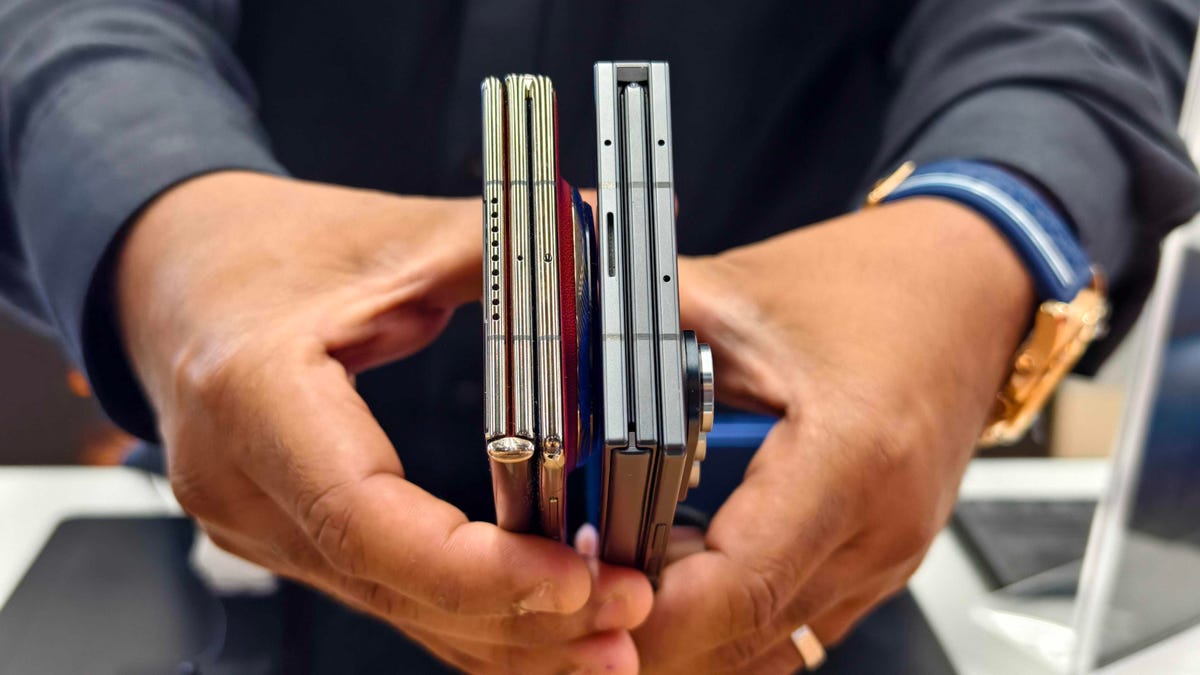
Huawei introduced the world’s first «trifold» phone, the Mate XT Ultimate, last year and launched it outside of China in February 2025. Despite only actually folding in two places, the phone was called a trifold because its 10.2-inch display divides into three sections.
I’ve been using it on and off since February and I liked the Mate XT so much that it made me skeptical about the Galaxy Z TriFold‘s design when Samsung first showcased it at the APEC CEO Summit in October. But after trying Samsung’s first trifold for myself, during a brief hands-on test at a Samsung store in Dubai, I changed my mind.
As foldable phone sales are expected to rise 30% year over year in 2026, according to analysts at IDC, it’s important for both Samsung and Huawei to find their own hook for customers. Each of these foldable phones has their place in the market and offers a different appeal. One is a tablet that folds into a phone, while the other is a three-in-one and the most versatile smartphone I’ve ever used. One of them has «Z TriFold» in its name but the other actually folds in a «Z» shape.
Here’s how the newly-launched Samsung trifold phone compares to the Huawei Mate XT Ultimate — the phone that pioneered this category.
Samsung Galaxy Z TriFold vs. Huawei Mate XT design
Both the Galaxy Z TriFold and Mate XT have large screens that divide into three panels (hence the name) and have two hinges to connect them. And yet, they’re vastly different.
The Huawei trifold phone has a single screen that folds in a Z shape to allow for three different forms. You can use it as a phone (fully folded), a mini-tablet (half-open), as well as a wide-screen tablet (fully opened). I’ve mostly used the Mate XT either in mini-tablet mode (one fold) or fully unfolded. And I found myself using it in phone mode (fully closed) only when I made calls.
In comparison, the Galaxy Z TriFold folds in a U shape as both panels fold inwards. You can only use it fully folded as a phone or fully opened as a wide-screen tablet, without the added ability to use it as a mini tablet.
Samsung’s Z Trifold uses two different-sized hinges and three panels of varying thickness, allowing the device’s flaps to fold on top of one another. The left hinge is like the one on the Fold 7 and comparatively tighter than the right hinge (the wider one), which springs open after you push it to a certain angle. On the back of the phone is a second display that occupies the «middle» section to use when the phone is fully closed.
When fully folded, its lowermost panel has a protruding edge, giving it a solid lip to grab onto while unfolding. It’s a nice addition to the flat-sided design, which doesn’t leave much space between panels. I found it easier to unfold than its sibling, the flat-sided Galaxy Z Fold 7.
The Huawei Mate XT has curved sides and a single screen, but because of that Z shape, it gives you three ways to use it. The right hinge unfolds like the Galaxy Z TriFold — you pull it out — but you don’t need to unfold the other side. With just one panel unfolded, it becomes a usable mini-tablet.
You can unfold the third section, at the back of the left panel, to open it fully and use it as a wide-screen tablet. Because it uses a single flexible screen, part of the soft folding display is always exposed to the elements when the device is folded shut in phone mode. So far, I haven’t noticed any scratches on the display but it is definitely less protected than Samsung’s inner screen. However, Huawei bundles a case with an extended lip to protect the always-exposed right side of the screen.
Both of these trifold phones have minimal screen creases but Samsung’s Galaxy Z TriFold feels better when I run my finger over the folding parts. While Huawei’s creases are deeper, they don’t bother me in day-to-day use. The creases on both phones are visible under direct artificial light and at an extreme angle.
The Huawei Mate XT is slimmer than the Galaxy Z TriFold. It’s just 3.6mm thick at its thinnest part when fully unfolded and 12.8mm when folded. In comparison, the Samsung phone is 3.9mm thick at its thinnest part and goes up to 12.9mm when fully unfolded. At 309 grams, the Z TriFold is also slightly heavier than the 298g Mate XT.
The Huawei trifold phone feels more premium than the Galaxy Z TriFold — probably because of its faux leather back, curved sides and gold accents. Samsung’s foldable has a carbon-fiber finish, which feels durable but not as premium.
The Mate XT has an IPX8 rating, while the Galaxy Z TriFold is rated IP48 for dust and water resistance. The «4» in IP48 means it’s protected against dust particles measuring over 1mm but not against everyday dust and pocket lint. Neither of these phones is truly dust-proof, but both are rated for water resistance, just like a standard smartphone.
Samsung Galaxy Z TriFold vs. Huawei Mate XT displays
The Galaxy Z TriFold has two screens: a Galaxy Z Fold 7-like 6.5-inch AMOLED screen with a 120Hz variable refresh rate and a 422ppi pixel density. It unfolds to a 10-inch tablet-sized screen with a 120Hz dynamic refresh rate with a lower 269ppi pixel density.
The Huawei Mate XT has a single 10.2-inch OLED screen with a 90Hz refresh rate and 382ppi pixel density. It has a lower refresh rate but a higher resolution and slimmer bezels. You can use it as a 6.4-inch phone, a 7.9-inch mini-tablet or a 10.2-inch widescreen tablet which makes it a more versatile design than Samsung’s trifold phone. The Mate XT’s display when folded down into «cover screen» has a wider aspect ratio with slimmer bezels than the TriFold’s cover display.
I haven’t watched videos on the Galaxy Z TriFold, but I assume the experience would be better on the Huawei since the main screen has a wider aspect ratio (when fully unfolded). It has less letterboxing (thick borders on top and bottom) than the Galaxy Z TriFold, which provides a slightly narrower aspect ratio when fully unfolded. However, it could be better for multitasking, especially when running three apps side by side, but I’ll need more time with the Samsung phone to come to a conclusion.
Galaxy Z TriFold vs. Huawei Mate XT performance and battery
The Samsung Galaxy Z TriFold has the Qualcomm Snapdragon 8 Elite for Galaxy chip, the same processor that powers its other 2025 flagship smartphones including the OnePlus 15. The chip is tuned for efficiency and I expect it to handle multitasking on a standalone DeX with ease. The TriFold also comes with 16GB of RAM and 512GB or 1TB of storage.
In contrast, the Huawei Mate XT runs on an in-house Kirin 9010 chip and is paired with 16GB of RAM and 512GB or 1TB of storage. It runs EMUI 14.2 operating system on global variants, which doesn’t have preinstalled Google apps. Despite the ban on US companies working with Huawei — including Google, the company behind Android — there are workarounds for installing the Play Store. You won’t encounter these kinds of hurdles on the Galaxy Z Trifold.
The Samsung trifold phone runs on One UI 8, based on Android 16. You get fast animations, smooth multitasking, a multitude of customization options and a better overall experience. The Galaxy Z TriFold will also get seven years of OS and security updates.
Both phones pack a 5,600-mAh battery but it remains to be seen how they fare against each other. I haven’t pushed the Mate XT to its limits and it delivers an entire day of use on a single charge. When I need to top up the battery, I use the bundled 66-watt charger or use wireless charging at up to 55 watts. The Galaxy Z TriFold supports 45-watt fast charging and Qi wireless charging.
Samsung Galaxy Z TriFold vs. Huawei Mate XT cameras
Both phones have three rear cameras that are identical to those found in the Galaxy Z Fold 7. The Galaxy Z TriFold has:
- a 200-megapixel main camera with optical image stabilization (OIS) and a f/1.7 aperture
- a 12-megapixel ultrawide camera with a 120-degree field of view
- a 10-megapixel 3x optical zoom telephoto camera with OIS and support for 30x digital zoom
- two 10-megapixel front-facing cameras — one inside the cover display and the other inside the folding screen
In comparison, the Huawei Mate XT has:
- a 50-megapixel main camera with OIS and a variable aperture (f/1.4 — f/4.0)
- a 12-megapixel 5.5x optical zoom telephoto camera with OIS
- a 12-megapixel ultrawide camera with a 120-degree field of view
- a 8-megapixel selfie shooter
Based on my experience with the Fold 7, you can expect vibrant colors, good dynamic range and balanced processing in low-light photos on the Samsung trifold phone. Images from the Huawei tend to have an over-processed look and it doesn’t do well with certain skin tones. But the Mate XT captures better portraits than my Fold 7. I’ll be able to test the photography chops from both phones once I have the Galaxy Z TriFold.
Here’s how the two foldable phones specs compare:
Samsung Galaxy Z TriFold specs vs. Huawei Mate XT Ultimate
| Samsung Galaxy Z TriFold | Huawei Mate XT Ultimate | |
| Cover display size, tech, resolution, refresh rate | 6.5-inch AMOLED, 2,520×1,080 pixels, 1-120 Hz refresh rate | none |
| Internal display size, tech, resolution, refresh rate | 10.0 AMOLED, 2,160×1,584 pixels, 1-120 Hz refresh rate | 10.2-inch AMOLED, 3,184×2,232 pixels, 90Hz refresh rate |
| Pixel density | Cover: 422 ppi; Internal display: 269 ppi | 382 ppi |
| Dimensions (inches) | Open: 6.27×8.43×0.15 inches (leftmost panel) / 0.17 inches (center panel) / 0.16 inches (rightmost panel with the side button); Closed: 6.27×2.95×0.50 inches | Open: 6.17×8.62×0.14-0.19 inches; Half-open: 6.17×8.62×0.19-0.29 inches; Closed: 6.17×2.89×0.50 inches |
| Dimensions (millimeters) | Open: 159.2×214.1×3.9mm (leftmost panel) / 4.2mm (center panel) / 4.0mm (rightmost panel with the side button) Closed: 159.2×75.0x12.9mm | Open: 156.7x219x3.6-4.75mm; Half-open: 156.7x219x4.75-7.45mm; Closed: 156.7×73.5×12.8mm |
| Weight (grams, ounces) | 309g (10.9 oz.) | 298g (10.51 oz) |
| Mobile software | Android 16 with One UI 8 | HarmonyOS 4.2 / EMUI 14.2 |
| Cameras | 200-megapixel (main), 12-megapixel (ultrawide), 10-megapixel (telephoto), 10-megapixel (cover screen, selfie) | 50-megapixel (main), 12-megapixel (ultrawide), 12-megapixel (periscope telephoto), 8-megapixel (front-facing) |
| Internal screen camera | 10-megapixel | 10-megapixel |
| Video capture | 8K | 4K |
| Processor | Qualcomm Snapdragon 8 Elite for Galaxy | Kirin 9010 |
| RAM/storage | 16GB + 512GB, 1TB | 16GB + 512GB, 1TB |
| Expandable storage | No | No |
| Battery | 5,600 mAh | 5,600 mAh |
| Fingerprint sensor | Yes | Yes |
| Connector | USB-C | USB-C |
| Headphone jack | No | No |
| IP rating for dust and water resistance | IP48 | None |
| Special features | 45W wired charging speed, Qi wireless charging, Galaxy AI, NFC, Wi-Fi 7, Bluetooth 5.4 | 66W wired charging speed, 50W wireless charging, NFC, Wi-Fi 6, Bluetooth 5.2 |
Technologies
Today’s NYT Connections Hints, Answers and Help for Dec. 24, #927
Here are some hints and the answers for the NYT Connections puzzle for Dec. 24 #927
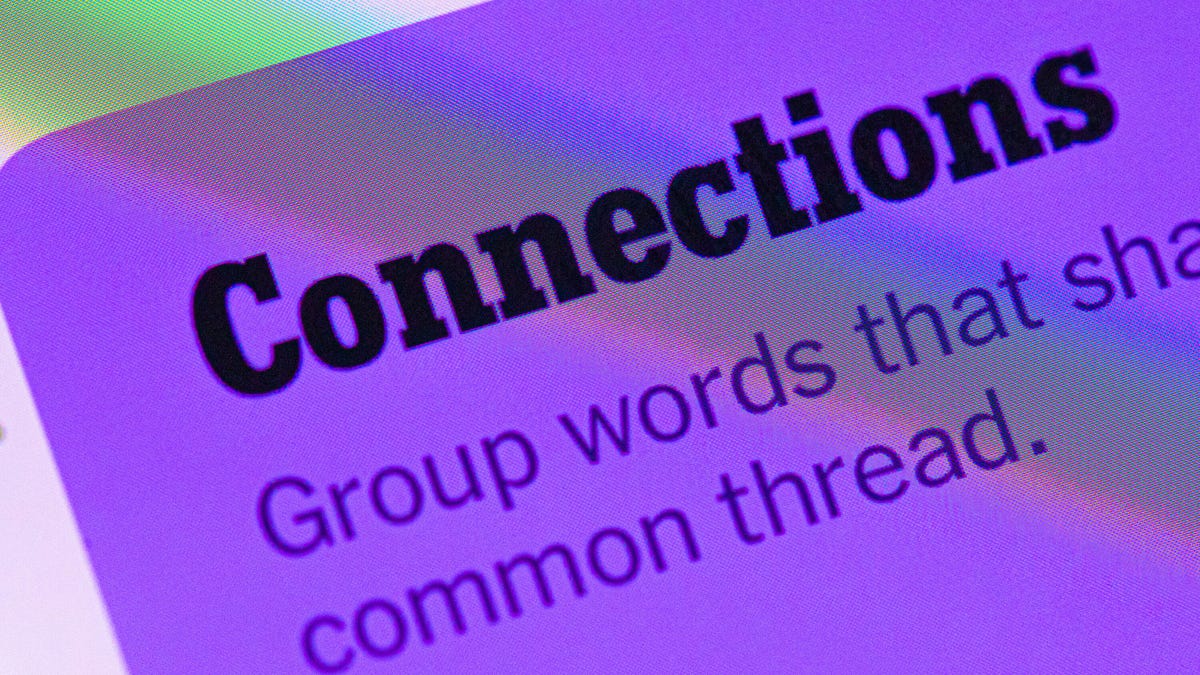
Looking for the most recent Connections answers? Click here for today’s Connections hints, as well as our daily answers and hints for The New York Times Mini Crossword, Wordle, Connections: Sports Edition and Strands puzzles.
Today’s NYT Connections puzzle is kind of tough. Ooh, that purple category! Once again, you’ll need to look inside words for hidden words. Read on for clues and today’s Connections answers.
The Times has a Connections Bot, like the one for Wordle. Go there after you play to receive a numeric score and to have the program analyze your answers. Players who are registered with the Times Games section can now nerd out by following their progress, including the number of puzzles completed, win rate, number of times they nabbed a perfect score and their win streak.
Read more: Hints, Tips and Strategies to Help You Win at NYT Connections Every Time
Hints for today’s Connections groups
Here are four hints for the groupings in today’s Connections puzzle, ranked from the easiest yellow group to the tough (and sometimes bizarre) purple group.
Yellow group hint: Cash out.
Green group hint: Chomp
Blue group hint: Walleye and salmon.
Purple group hint: Make a musical sound, with a twist.
Answers for today’s Connections groups
Yellow group: Slang for money.
Green group: Masticate.
Blue group: Fish.
Purple group: Ways to vocalize musically plus a letter.
Read more: Wordle Cheat Sheet: Here Are the Most Popular Letters Used in English Words
What are today’s Connections answers?
The yellow words in today’s Connections
The theme is slang for money. The four answers are bacon, bread, cheese and paper.
The green words in today’s Connections
The theme is masticate. The four answers are bite, champ, chew and munch.
The blue words in today’s Connections
The theme is fish. The four answers are char, pollock, sole and tang.
The purple words in today’s Connections
The theme is ways to vocalize musically plus a letter. The four answers are hump (hum), rapt (rap), singe (sing) and whistler (whistle).
Don’t miss any of our unbiased tech content and lab-based reviews. Add CNET as a preferred Google source.
Toughest Connections puzzles
We’ve made a note of some of the toughest Connections puzzles so far. Maybe they’ll help you see patterns in future puzzles.
#5: Included «things you can set,» such as mood, record, table and volleyball.
#4: Included «one in a dozen,» such as egg, juror, month and rose.
#3: Included «streets on screen,» such as Elm, Fear, Jump and Sesame.
#2: Included «power ___» such as nap, plant, Ranger and trip.
#1: Included «things that can run,» such as candidate, faucet, mascara and nose.
Technologies
Today’s NYT Mini Crossword Answers for Wednesday, Dec. 24
Here are the answers for The New York Times Mini Crossword for Dec. 24.

Looking for the most recent Mini Crossword answer? Click here for today’s Mini Crossword hints, as well as our daily answers and hints for The New York Times Wordle, Strands, Connections and Connections: Sports Edition puzzles.
Need some help with today’s Mini Crossword? I’m Irish-American, but yet 6-Down, which involves Ireland, stumped me at first. Read on for all the answers.. And if you could use some hints and guidance for daily solving, check out our Mini Crossword tips.
If you’re looking for today’s Wordle, Connections, Connections: Sports Edition and Strands answers, you can visit CNET’s NYT puzzle hints page.
Read more: Tips and Tricks for Solving The New York Times Mini Crossword
Let’s get to those Mini Crossword clues and answers.
Mini across clues and answers
1A clue: Wordle or Boggle
Answer: GAME
5A clue: Big Newton
Answer: ISAAC
7A clue: Specialized vocabulary
Answer: LINGO
8A clue: «See you in a bit!»
Answer: LATER
9A clue: Tone of many internet comments
Answer: SNARK
Mini down clues and answers
1D clue: Sharks use them to breathe
Answer: GILLS
2D clue: From Singapore or South Korea, say
Answer: ASIAN
3D clue: Large ocean ray
Answer: MANTA
4D clue: ___ beaver
Answer: EAGER
6D clue: Second-largest city in the Republic of Ireland, after Dublin
Answer: CORK
Don’t miss any of our unbiased tech content and lab-based reviews. Add CNET as a preferred Google source.

